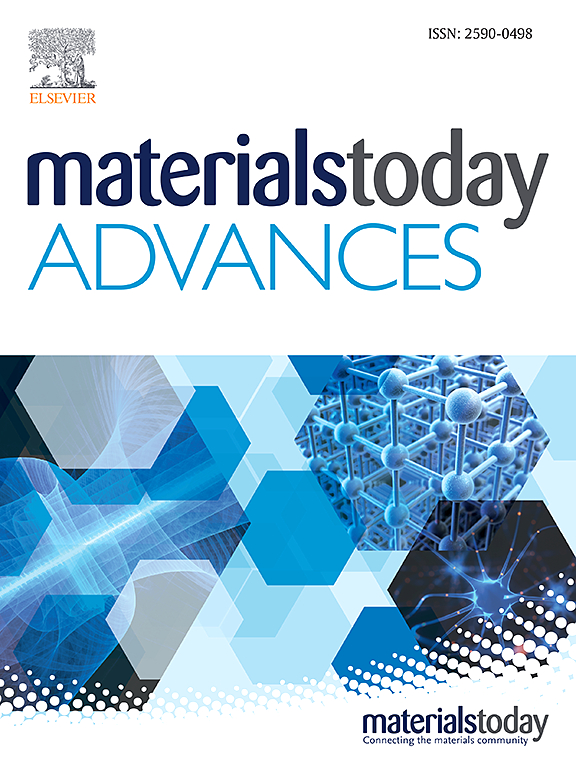3D printed MXene architectures for a plethora of smart applications
IF 8
2区 材料科学
Q1 MATERIALS SCIENCE, MULTIDISCIPLINARY
引用次数: 0
Abstract
This review explores the integration of titanium carbide (TiCT) MXene materials with three-dimensional (3D) printing techniques for advanced functional applications. TiCT MXenes exhibit remarkable intrinsic properties like high surface area, metallic conductivity, and flexible surface functionalities. These materials can be associated to 3D printing techniques that offer solutions to conventional techniques’ limitations, enabling the creation of high-performance, free-standing, and multiscale devices with precise control over architecture. Additionally, 3D printing techniques are cost-effective, energy-saving, and sustainable, reducing material waste and carbon footprint. This review begins by presenting an overview of two-dimensional (2D) materials and their distinct characteristics when comparted to the MXenes family, followed by discussions on synthesis routes for 3D printable MXene inks and fabrication methods for complex MXene-based structures. Various applications of 3D-printed MXene architectures are explored, particularly in energy storage devices like supercapacitors and batteries, leveraging MXenes exceptional electrical conductivity and high surface area to enhance energy storage capabilities. Moreover, the potential of 3D-printed MXene architectures in smart devices, incorporating technologies such as artificial intelligence and connectivity features, is highlighted, particularly in smart sensors, biosensors, electromagnetic shielding, and environmental remediation.用于各种智能应用的 3D 打印 MXene 架构
本综述探讨了碳化钛(TiCT)MXene 材料与三维(3D)打印技术的整合,以实现先进的功能应用。TiCT MXenes 具有显著的内在特性,如高比表面积、金属导电性和灵活的表面功能。这些材料可与三维打印技术相结合,为解决传统技术的局限性提供解决方案,从而能够制造出高性能、独立和多尺度的器件,并对结构进行精确控制。此外,三维打印技术还具有成本效益、节能和可持续发展的特点,可减少材料浪费和碳足迹。本综述首先概述了二维(2D)材料及其与 MXene 系列相比的独特特性,然后讨论了可三维打印的 MXene 油墨的合成路线和基于 MXene 的复杂结构的制造方法。探讨了三维打印 MXene 结构的各种应用,特别是在超级电容器和电池等储能设备中的应用,利用 MXenes 的优异导电性和高比表面积提高储能能力。此外,还强调了三维打印 MXene 结构在智能设备中的潜力,其中融入了人工智能和连接功能等技术,特别是在智能传感器、生物传感器、电磁屏蔽和环境修复方面。
本文章由计算机程序翻译,如有差异,请以英文原文为准。
求助全文
约1分钟内获得全文
求助全文
来源期刊

Materials Today Advances
MATERIALS SCIENCE, MULTIDISCIPLINARY-
CiteScore
14.30
自引率
2.00%
发文量
116
审稿时长
32 days
期刊介绍:
Materials Today Advances is a multi-disciplinary, open access journal that aims to connect different communities within materials science. It covers all aspects of materials science and related disciplines, including fundamental and applied research. The focus is on studies with broad impact that can cross traditional subject boundaries. The journal welcomes the submissions of articles at the forefront of materials science, advancing the field. It is part of the Materials Today family and offers authors rigorous peer review, rapid decisions, and high visibility.
 求助内容:
求助内容: 应助结果提醒方式:
应助结果提醒方式:


